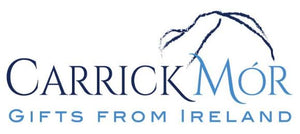The Táin


The Táin: Ireland’s Epic
Among the ancient tales of Ireland, none holds the stature of Táin Bó Cúailnge (The Cattle Raid of Cooley). Often regarded as Ireland’s national epic, it is the central tale of the Ulster Cycle, recounting a clash between Connacht and Ulster over the great Brown Bull of Cooley. More than just a saga of cattle and kings, The Táin is bound to both landscape and legend. Its drama is anchored in three great royal sites—Rathcroghan, the Cooley Peninsula, and Emain Macha—and it finds its beating heart in the figure of Cú Chulainn, the young hero who stands alone against an army.
Rathcroghan: The Ambition of Queen Medb
Rathcroghan, in County Roscommon, is the royal seat of Connacht and the legendary home of Queen Medb. Archaeologically, it is one of Ireland’s richest ceremonial landscapes, dotted with earthworks, burial mounds, and ringforts. In the epic, it is from Rathcroghan that Medb sets forth her campaign, driven by a desire to match her husband Ailill’s wealth. Her ambition draws the armies of Connacht eastward toward Cooley—and into conflict with Ulster. Cú Chulainn, though still scarcely more than a boy, emerges as her great obstacle. From the quiet fields of Rathcroghan, Medb’s challenge reverberates across Ireland, calling forth the lone champion who will meet her host at every ford.

The Cooley Peninsula: The Prize and the Battlefield
Cooley, in County Louth, gives the tale its name and becomes the crucible of heroism. It is here that the great Brown Bull of Cooley, Donn Cúailnge, grazes—the prize that Medb covets. Yet Cooley is more than the bull’s pasture; it is the testing ground of Cú Chulainn. Stricken by the curse of Macha, the warriors of Ulster cannot rise to defend their land, leaving the teenage hero to face Medb’s advancing army alone. At every ford and pass, Cú Chulainn holds the line through single combat. His ríastrad, the terrifying battle frenzy that transforms him into something more than human, shakes both friend and foe. The rugged hills and rivers of Cooley still bear the names of his duels, as if the land itself remembers the clash of shield and spear.

Emain Macha: The Heart of Ulster
To the north lies Emain Macha (Navan Fort), near modern Armagh, the royal seat of Ulster and the home of King Conchobar mac Nessa and the Red Branch warriors. In the story, Emain Macha is weakened—the curse laid upon the men of Ulster leaves them bedridden, unable to answer Medb’s challenge. From this vulnerability arises Cú Chulainn’s lonely vigil, for he is the one warrior spared the curse. Emain Macha thus represents both the grandeur and the fragility of Ulster, and the place from which its greatest defender must fight alone. The vast earthwork of Navan Fort still looms on the Armagh landscape, a reminder of the power that once radiated from this site, and of the boy who bore its honor on his shoulders.

Hero, Land, and Memory
In The Táin, Cú Chulainn is more than a warrior; he is the living thread that binds Rathcroghan’s ambition, Cooley’s battlefields, and Emain Macha’s honor. Without him, the tale would be merely a cattle raid; with him, it becomes an epic of endurance and myth. He embodies the idea that Ireland’s landscape is not passive, but alive with memory—that the hills, rivers, and mounds remember heroism, just as much as people do.

In this way, The Táin is Ireland’s answer to both the Iliad and the Odyssey: a story of war and wandering, of place and person, where a boy-hero faces impossible odds and inscribes his legend into the land itself. To walk Rathcroghan, Cooley, or Emain Macha today is to stand not only on earth and stone, but also on the threshold of myth, where Cú Chulainn still defends Ulster in the mind’s eye.



